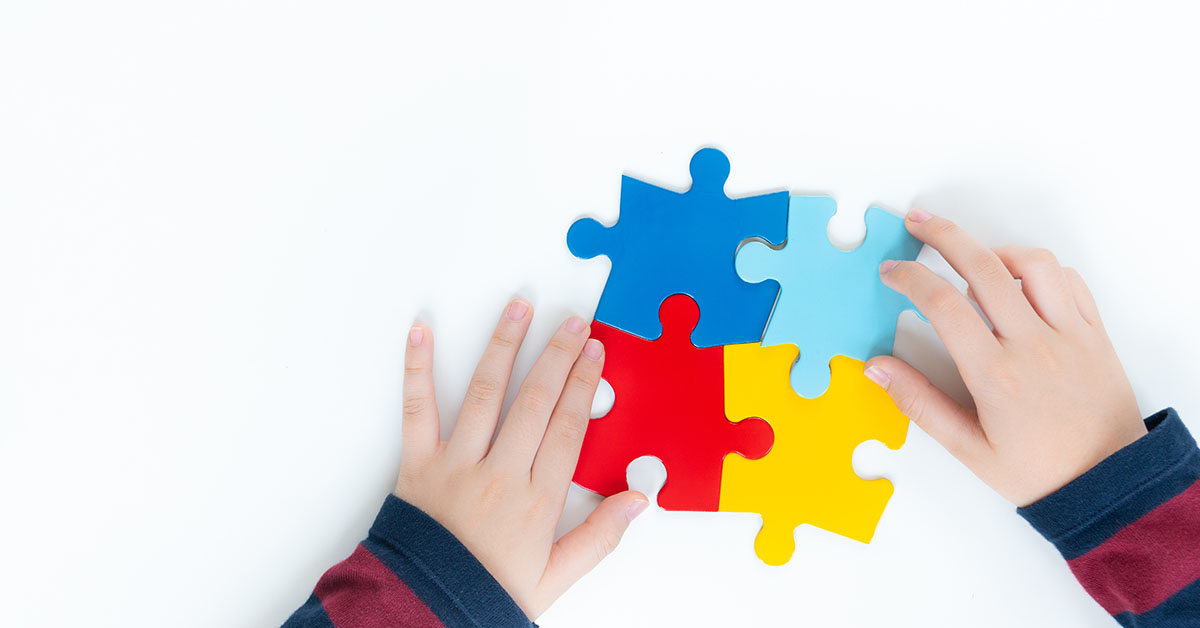Exploring Autism: Strategies for Reliable Communication and Communication
Efficient interaction and interaction with people on the autism range demand an extensive understanding of their unique demands and choices. Methods such as utilizing clear language, making use of aesthetic supports, and promoting regular routines can considerably enhance interaction and reduce anxiety. Furthermore, recognizing the importance of non-verbal hints and shared rate of interests leads the way for significant connections. Nevertheless, the complexities of these approaches expose more factors to consider that merit expedition, specifically in how they can be adapted to private experiences and varied contexts. What might these adjustments resemble in practice?
Comprehending Autism Spectrum Problem
Autism Spectrum Condition (ASD) encompasses a series of neurodevelopmental problems defined by obstacles in social interaction, interaction, and repetitive actions. The term "spectrum" reflects the diverse symptoms and differing levels of severity experienced by people with ASD. While some might display considerable impairments, others may show high-functioning characteristics, allowing for better freedom in every day life.
The onset of ASD normally takes place in early youth, with signs typically recognizable by age 2. Early indications may include delayed speech advancement, limited eye contact, and difficulties in understanding social signs. Although the exact etiology of ASD continues to be uncertain, study suggests a combination of ecological and hereditary aspects plays an essential role in its growth.
People with ASD usually possess distinct strengths, such as heightened attention to detail and exceptional memory skills. They might battle with understanding abstract concepts and handling changes to routine - autism. Therefore, treatments and assistance tailored to specific requirements are vital for fostering interaction and social skills. Acknowledging the complexity of ASD is important for promoting recognition, acceptance, and reliable techniques that promote significant interactions with people on the range.

Significance of Clear Communication
Reliable interaction is important for fostering understanding and connection, specifically for individuals with Autism Range Disorder (ASD) Clear interaction not just promotes social interactions however likewise enhances the individual's ability to reveal their thoughts, needs, and emotions. For people with ASD, the subtleties of language can often be challenging; therefore, using straightforward and unambiguous language is important.
In addition, clear communication helps in reducing irritation and anxiety that might develop from misconceptions. When messages are shared in a straight and constant manner, people with ASD are better equipped to interpret details properly, which can dramatically enhance their social engagement and engagement in numerous setups.
Developing regimens and making use of aesthetic supports can additionally strengthen clear communication. These techniques give individuals with foreseeable frameworks that help understanding and retention of information. Additionally, proactively listening and being individual during interactions promotes a helpful setting where individuals with ASD really feel valued and understood.
Inevitably, prioritizing clear interaction not only equips individuals with ASD yet likewise promotes even more significant links with their peers, caretakers, and the bigger area, leading the way for inclusive interactions and collective relationships. - autism
Non-Verbal Communication Methods
Communication prolongs beyond words, and for people with Autism Spectrum Condition (ASD), non-verbal cues play a significant role in interactions. Non-verbal interaction strategies can include faces, gestures, body movement, and eye contact, every one of which work as important elements for conveying purposes and emotions.
Comprehending and translating these non-verbal signals can enhance communications with people with her explanation ASD. A cozy smile or open position can create a welcoming atmosphere, motivating engagement. Similarly, utilizing aesthetic aids-- such as photo cards or icons-- can link interaction spaces and help communicate messages a lot more properly.
It is additionally vital to be mindful of personal room, as people with ASD might have different convenience degrees concerning distance. Observing their responses to physical nearness can notify appropriate adjustments.

Developing Encouraging Atmospheres
Creating a supportive atmosphere is important for promoting favorable communications and improving the well-being of people with Autism Spectrum Condition (ASD) Such atmospheres can substantially lower stress and anxiety and produce a sense of security, permitting people to express themselves much more easily.
To attain this, it is vital to take into consideration sensory sensitivities that people with ASD might experience. Changing the physical space to include soft illumination, marginal background sound, and comfy seats can create a calming environment. Furthermore, using consistent routines and clear visual routines can aid people expect changes and minimize uncertainty, further promoting comfort.
Social areas ought to be structured to decrease overwhelming stimulations while giving chances for interaction in recommended tasks. Promoting locations designated for silent time can likewise function as a sanctuary during minutes of stress. Significantly, incorporating components of option equips individuals, enabling them to exercise firm in their atmosphere.

Urging Social Communications
Fostering social interactions among individuals with Autism Range Problem (ASD) calls for intentional strategies that prioritize comfort and engagement. Establishing foreseeable routines can help in reducing stress and anxiety, making social settings more approachable. Producing structured environments with specified functions and responsibilities enables people to involve without the frustrating stress of disorganized social dynamics.
Incorporating rate of interests and staminas right into social tasks can function as a driver for communication. For example, organizing group activities around shared pastimes or subjects of attraction can assist in all-natural discussions and links. Additionally, using visual supports, such as social scripts or pictorial schedules, can help in recognizing social signs and expectations.
Designing suitable social behaviors is important - autism. Grownups find more and peers ought to show efficient click over here interaction methods, including energetic listening and turn-taking. Role-playing situations can likewise offer a safe area for people to practice these skills
Finally, cultivating peer partnerships through comprehensive techniques is important. Encouraging inclusive playdates or team outings can develop opportunities for socialization in a comfy setup. By executing these instructors, methods and caregivers can considerably improve social communications for people with ASD, advertising their general social advancement and well-being.
Final Thought
In verdict, efficient interaction and interaction techniques are important for sustaining individuals with Autism Spectrum Condition. Emphasizing clear language, including non-verbal signs, and developing predictable regimens dramatically boost interaction and decrease anxiety. Producing helpful environments cultivates risk-free social communications, while motivating shared rate of interests facilitates meaningful links. Eventually, these techniques encourage people with autism to navigate social landscapes, advertising their overall health and enabling the growth of enduring partnerships.
Efficient interaction and communication with people on the autism spectrum demand a thorough understanding of their unique needs and preferences. Clear interaction not only helps with social communications yet also enhances the person's capacity to reveal their emotions, demands, and ideas.Promoting social interactions amongst people with Autism Range Problem (ASD) needs deliberate techniques that focus on comfort and interaction. By implementing these instructors, approaches and caregivers can significantly enhance social interactions for individuals with ASD, promoting their general social growth and well-being.
In final thought, efficient interaction and interaction techniques are vital for sustaining people with Autism Range Problem.